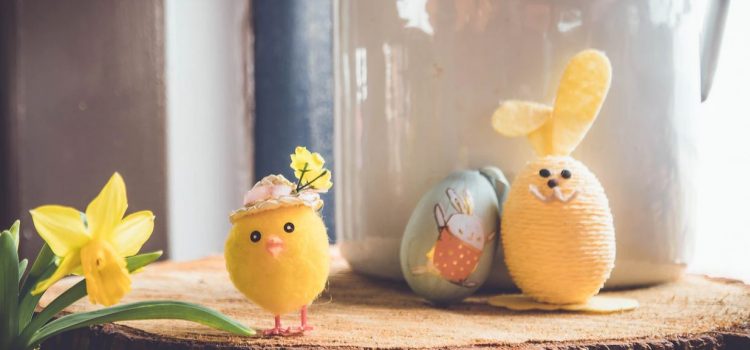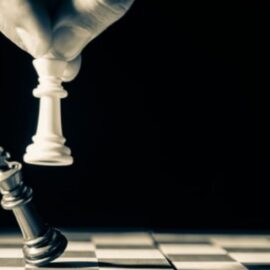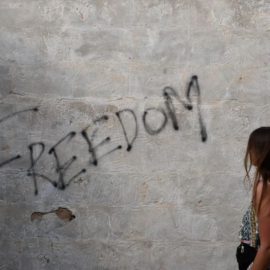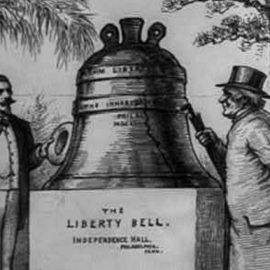
This is a free excerpt from one of Shortform’s Articles. We give you all the important information you need to know about current events and more.
Don't miss out on the whole story. Sign up for a free trial here .
Have you ever wondered what the connection is between Jesus and an egg-carrying bunny? Where did our Easter traditions come from?
The Easter holiday is commonly understood to be a day to celebrate the resurrection of Christ after his death by crucifixion. It’s celebrated around the world and has existed for around 1,700 years. However, not many people know where colored eggs and bunnies come in.
Let’s take a look at the many pagan Easter traditions.
Why Pagan Customs Are Part of Christian Holidays
Easter is commonly understood to be a day to celebrate the resurrection of Christ after his death by crucifixion. It’s celebrated around the world and has existed, in one form or another, for around 1,700 years. But what’s the connection between Jesus and the Easter Bunny? How do rabbits, colored eggs, and baby chicks figure into a Biblical story about an execution and miraculous resurrection from the dead?
In this article, we’ll explain how those elements are all connected by the theme of rebirth—and how that theme inextricably links Christianity with the pagan Easter traditions.
A Background of Easter
Scholars of history and religion have long recognized the adoption of pre-Christian pagan elements into Christianity. When Christianity arrived on the scene, it didn’t suddenly replace the existing religions. Rather, Christian beliefs were gradually synthesized with pagan customs already being practiced. As the Roman Empire spread throughout Europe, many existing customs of the conquered peoples were incorporated into Christian customs. This made it easier for those populations to accept the new religion, while still keeping some of the practices that were meaningful to them.
And many of those pagan customs have remained a part of Christianity to the present day—we can clearly see some of them in several Christian holidays, including Christmas, the Irish St. Bridget’s Day, and of course Easter. Like many cultural traditions, the Easter holiday has evolved over its long history, incorporating disparate elements from a variety of times and places.
The Pagan Elements of Easter
Because Easter as a Christian holiday celebrating rebirth was layered on top of celebrations of the arrival of spring, most of its symbols—eggs, chicks, bunnies, lambs, and spring flowers—have widespread cross-cultural associations with fertility and new life. But even the name “Easter” has been potentially linked to a pagan goddess, and the seasonal timing of the holiday is undoubtedly derived from pagan practices. Let’s take a closer look at the specific elements of Easter that can be linked to pre-Christian pagan customs.
The Goddess Eostre
Although there’s some scholarly debate around the origins of the word “Easter” one of the more commonly accepted theories is that it’s derived from the name of an Anglo-Saxon goddess of spring called Eostre. This is attested in the work of an English monk and scholar named The Venerable Bede. In the 8th century Bede wrote that the name for the month of April in England, Eosturmonath (Eostre month), was “called after a goddess…in whose honor feasts were celebrated in that month.”
Another theory that the name is derived from that of an ancient Sumerian goddess called Ishtar has less scholarly support. However, the story of Ishtar—who would later be known as Innana—does embody strikingly similar themes to the story of Christ. The myth, from around 1900-1600 BC, tells of the goddess’ execution by being hanged on a hook, and her subsequent resurrection three days later.
The Spring Equinox
Easter is not meant to fall on a specific day that’s believed to actually mark the date of Jesus’ resurrection. It’s scheduled according to the phases of the moon, a common pagan practice for dating holidays. In the year 325 at the Council of Nicaea, it was decided that the celebration of the Resurrection should fall on the Sunday after the first full moon that occurs on or after the spring equinox. If that full moon falls on a Sunday, then Easter will be the next Sunday.
Historians say that as Christianity was taking hold in its first few centuries, many of the existing pagan peoples already had firmly entrenched celebrations of resurrection and rebirth around the spring equinox. It made sense, then, that Christianity’s story centered on this theme should be placed at the same time as those celebrations, making the new religion relatable to the pagan populations.
Eggs and Bunnies
According to The Easter Book by Francis X. Weiser, pre-Christian Indo-European cultures considered the egg a sacred symbol of spring, because the emergence of new life from something that appeared dead seemed miraculous. Weiser also says ancient Persians considered the spring equinox to mark the new year, and they customarily presented one another with beautifully decorated eggs to mark the occasion.
In European traditions, the Easter Bunny is known as the Easter Hare. Although the hare isn’t associated with Easter until later in history, it’s a symbol derived from much older customs.
The hare was such a common pagan symbol, in fact, that in 18th-century Europe there were attempts to banish hare-related customs from Easter celebrations due to their pagan association. Likewise, in early America, some Christians—particularly the Puritans—rejected both Christmas and Easter holiday customs on the grounds that they were too heavily influenced by paganism. But perhaps in a pluralistic culture in the modern world, a syncretic holiday with a variety of rich, symbolic meaning connecting us to spirituality and to nature has something to offer everyone.

Want to fast-track your learning? With Shortform, you’ll gain insights you won't find anywhere else .
Here's what you’ll get when you sign up for Shortform :
- Complicated ideas explained in simple and concise ways
- Smart analysis that connects what you’re reading to other key concepts
- Writing with zero fluff because we know how important your time is






